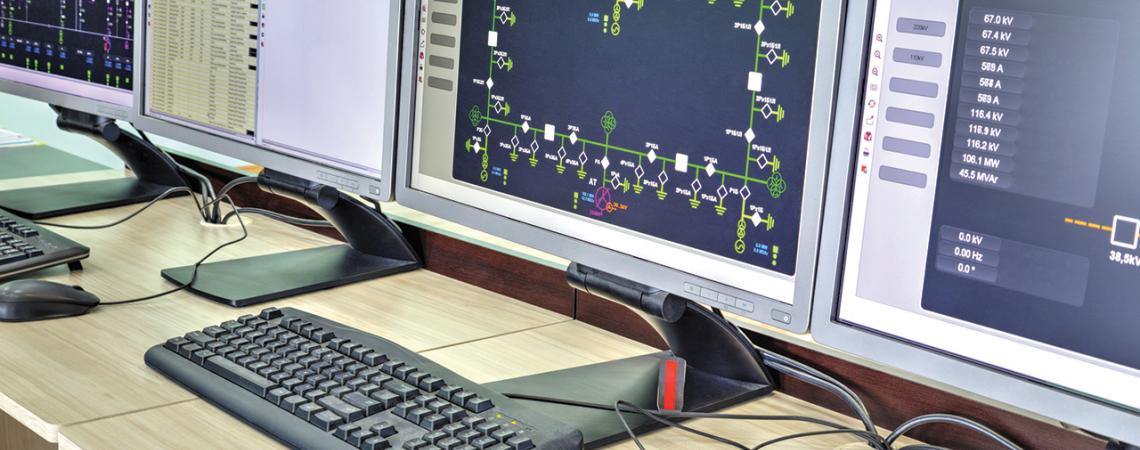SCADA systems help electric cooperatives monitor and control what is happening in their service territory.
When it comes to adopting new technology, electric cooperatives are David beating Goliath.
“The smaller size of co-ops allows us to be more nimble because we have fewer consumers,” says Pat O’Loughlin, president and CEO of Ohio’s Electric Cooperatives, the wholesale power supplier and trade association for the 24 co-ops serving the state. “We can try new things and deploy them faster than some big utilities.”
For example, electric co-ops have led the industry in advanced metering infrastructure (AMI), which provides frequent, more accurate readings and helps discover outages faster than with older analog meters. About 70 percent of electric cooperatives across the country have implemented AMI, according to the National Rural Electric Cooperative Association (NRECA).
New computer software that communicates with equipment in the field also enables co-ops to know where outages are without having to send a crew into the field to visually inspect the power lines and poles, O’Loughlin says.
“That means co-ops can tell their consumers earlier what happened and when power will be back on,” he says. It also allows co-ops to offer outage maps, either on their own website or on Ohio’s Electric Cooperatives’ website at ohioec.org/oec/outages. These maps show where outages are occurring and how many members are affected. Software and computers in the office can also sometimes detect problems before they even cause outages.
“All of this leads to improved service — customer service and electric service,” O’Loughlin says.

Innovation with consumers in mind
Electric cooperatives are not-for-profit and are owned by the consumers they serve. That’s why those consumers are called “members” or “owners,” and not simply “customers.” Co-ops wouldn’t exist without their consumers, so they have a responsibility to invest wisely in technologies that will improve service, assist members with managing their energy use, and help keep costs in check.
Here in Ohio, some electric co-ops have adopted programs like SmartHub, which allows members to keep track of energy use from month to month. Some programs even incorporate weather data to show how temperatures affect electricity use. These programs typically also allow consumers to pay bills and report outages, depending on the options the co-op chooses.
National support
One of the benefits of being a cooperative member is the sixth cooperative principle, “Cooperation Among Cooperatives.”
Even though they’re all independent entities, co-ops work together to share resources and knowledge. Thanks to a nationwide network of co-ops and supporting trade associations, that means your co-op has the strength and resources of a large utility, but you still have local, democratic control and operation.
“Because cooperatives’ mission is to serve their member-owners and not to make a profit, they have a strong incentive to look for innovations that are going to allow them to provide better service at a lower cost and meet member expectations,” says Jim Spiers, NRECA’s vice president of business and technology strategies. “Co-ops’ approach to innovation is collaborative: They routinely share their experience and analysis with the nationwide network.” Pooled resources through membership dues in associations like NRECA, he adds, mean additional funding to find solutions to cooperative issues.
Terms to know
Members might see these terms in their co-op’s local magazine pages or in other correspondence. All of these programs work together, along with your co-op’s employees, to improve customer service and electric reliability.
AMI, or advanced metering infrastructure: A set of technologies and software applications that combine two-way communications with “smart” meters to provide electric utilities with near real-time oversight of system operations.
SCADA, or Supervisory Control and Data Acquisition: Composed of software and hardware that communicate with one another to collect data in the field and communicate it back to the co-op, SCADA systems help to quickly spot and solve power outages.
GIS, or geographic information system: An electronic set of maps, using GPS coordinates, that catalogs every pole, wire, transformer, and piece of equipment in the field, which allows for better and faster system maintenance. Often integrates with a vegetation management system, which shows where trees and brush may interfere with power lines and cause outages.
Outage management system: Tells the co-op which meters are experiencing outages, and automatically records a reported outage based on the phone number calling in, as long as the phone used to report the outage is associated with that electric account.
Magen Howard is manager of communications and member services at Ohio’s Electric Cooperatives.









